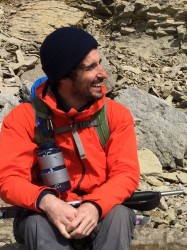BibTex format
@article{Brazeau:2023:10.1098/rsos.221452,
author = {Brazeau, MDD and Yuan, H and Giles, S and Jerve, ALL and Zorig, E and Ariunchimeg, Y and Sansom, RSS and Atwood, RCC},
doi = {10.1098/rsos.221452},
journal = {Royal Society Open Science},
title = {A well-preserved 'placoderm' (stem-group Gnathostomata) upper jaw from the Early Devonian of Mongolia clarifies jaw evolution},
url = {http://dx.doi.org/10.1098/rsos.221452},
volume = {10},
year = {2023}
}

